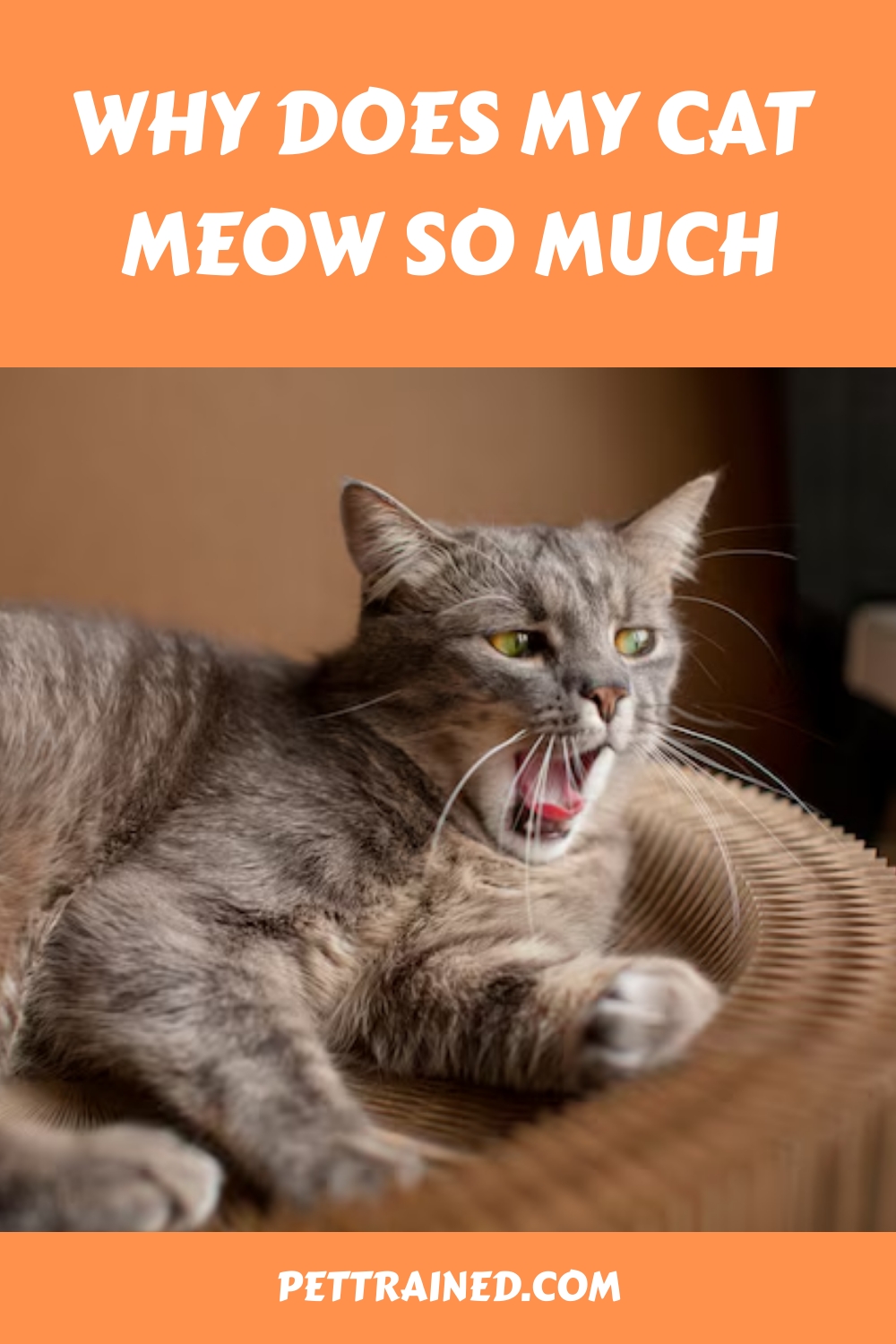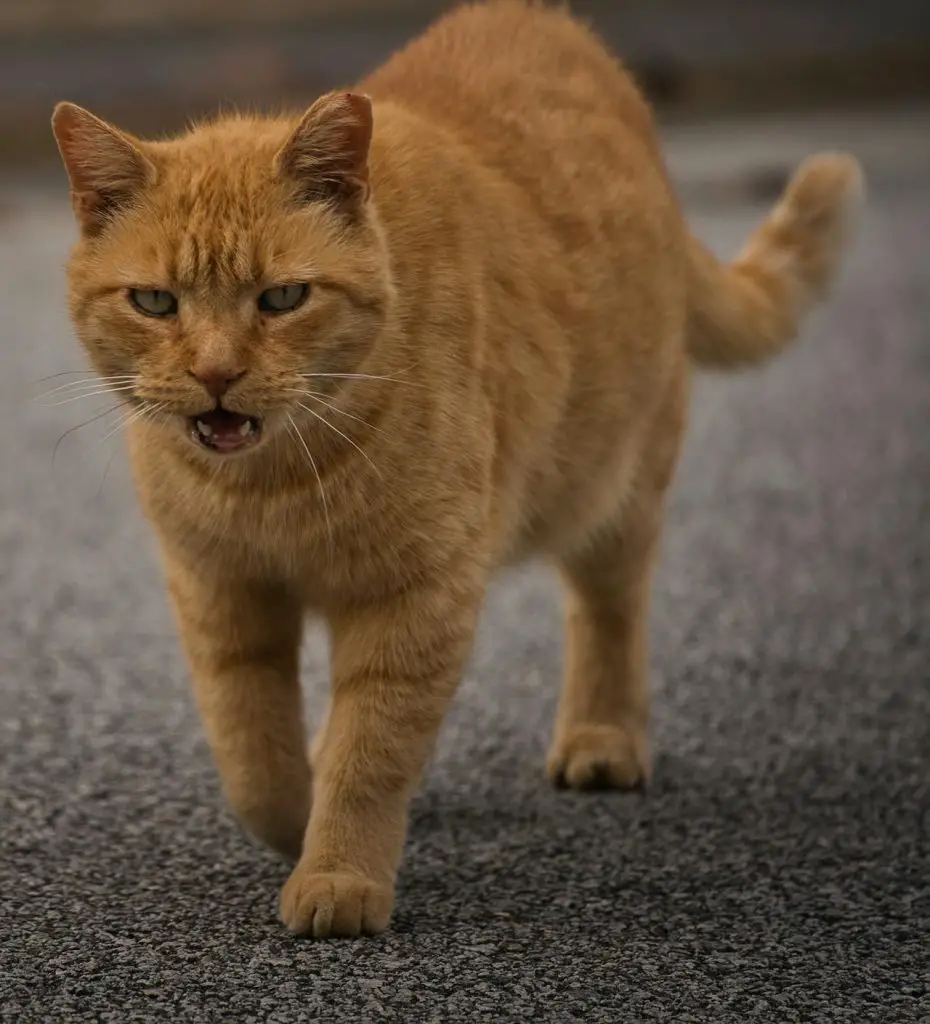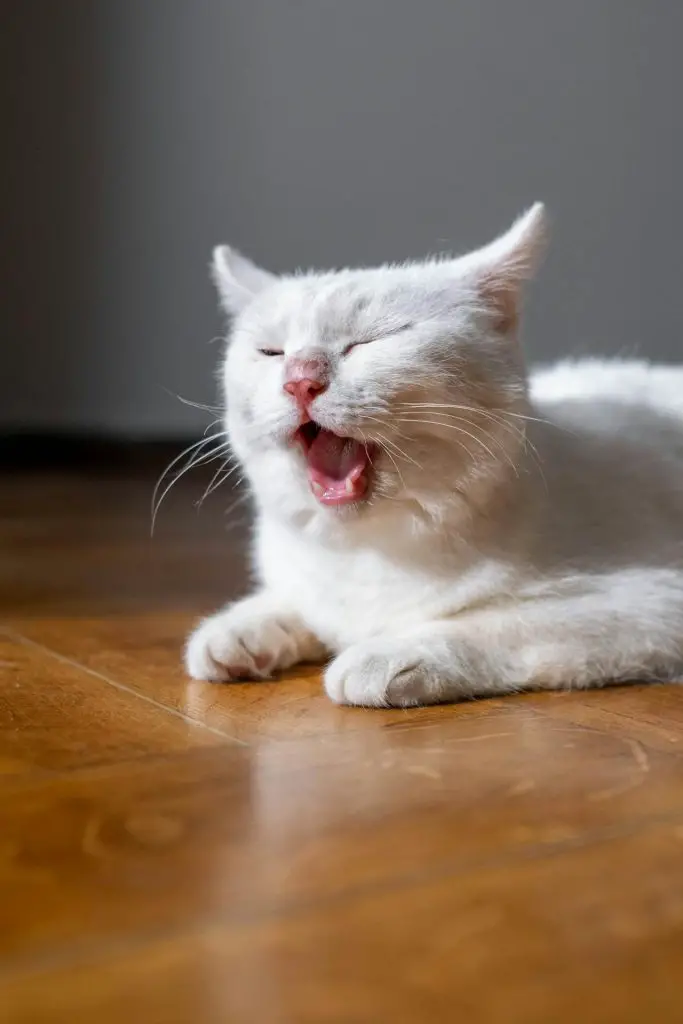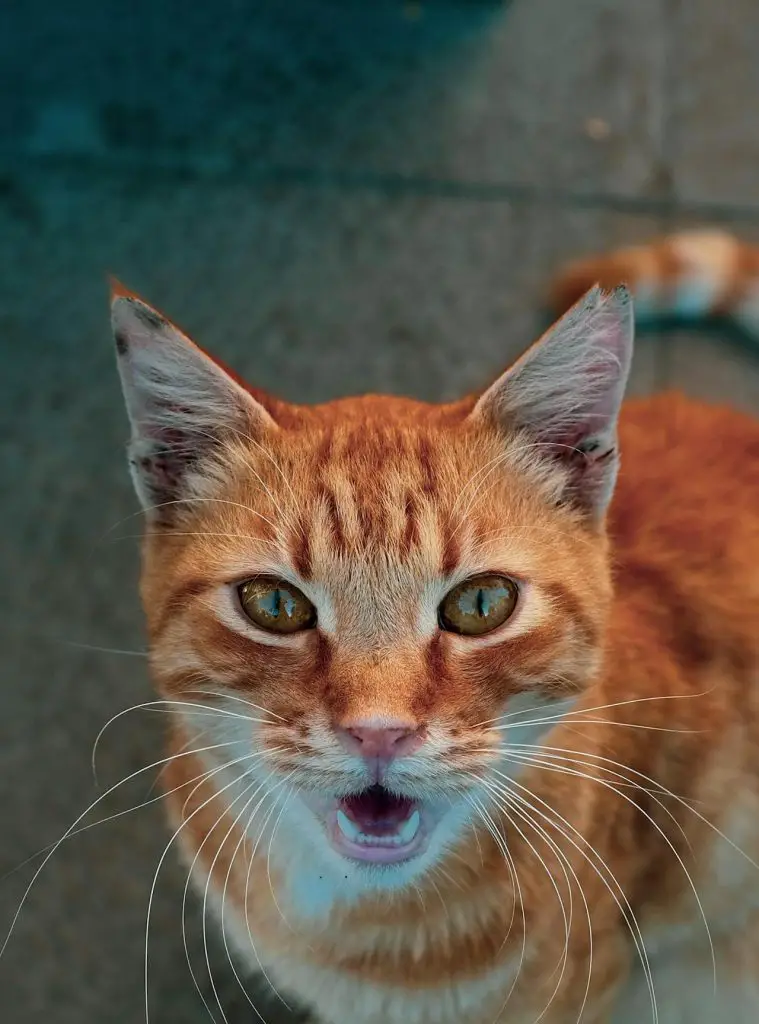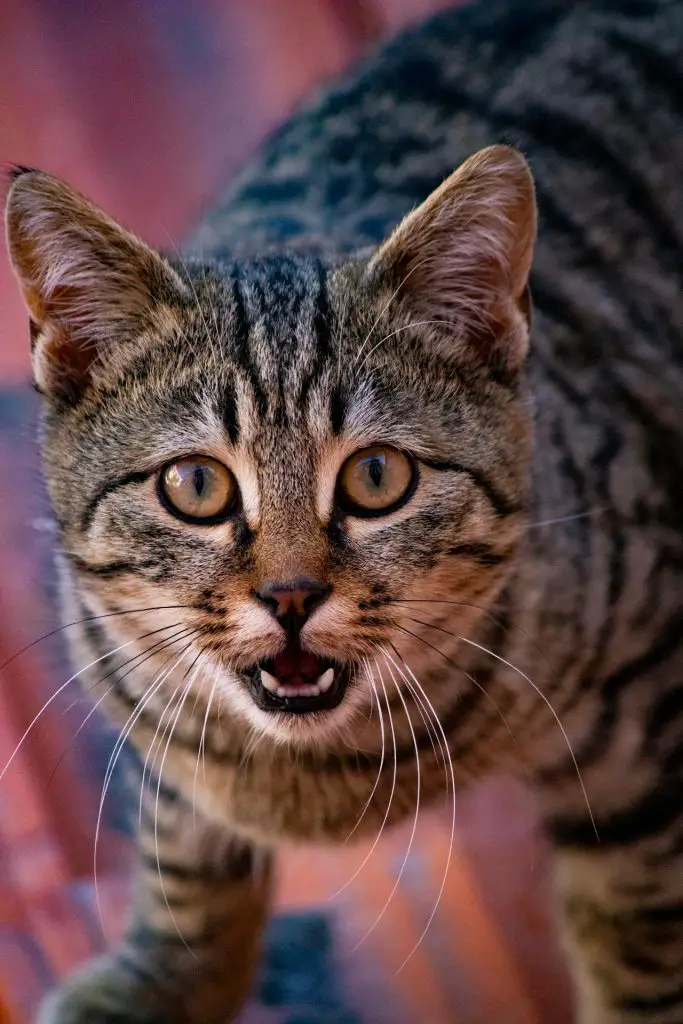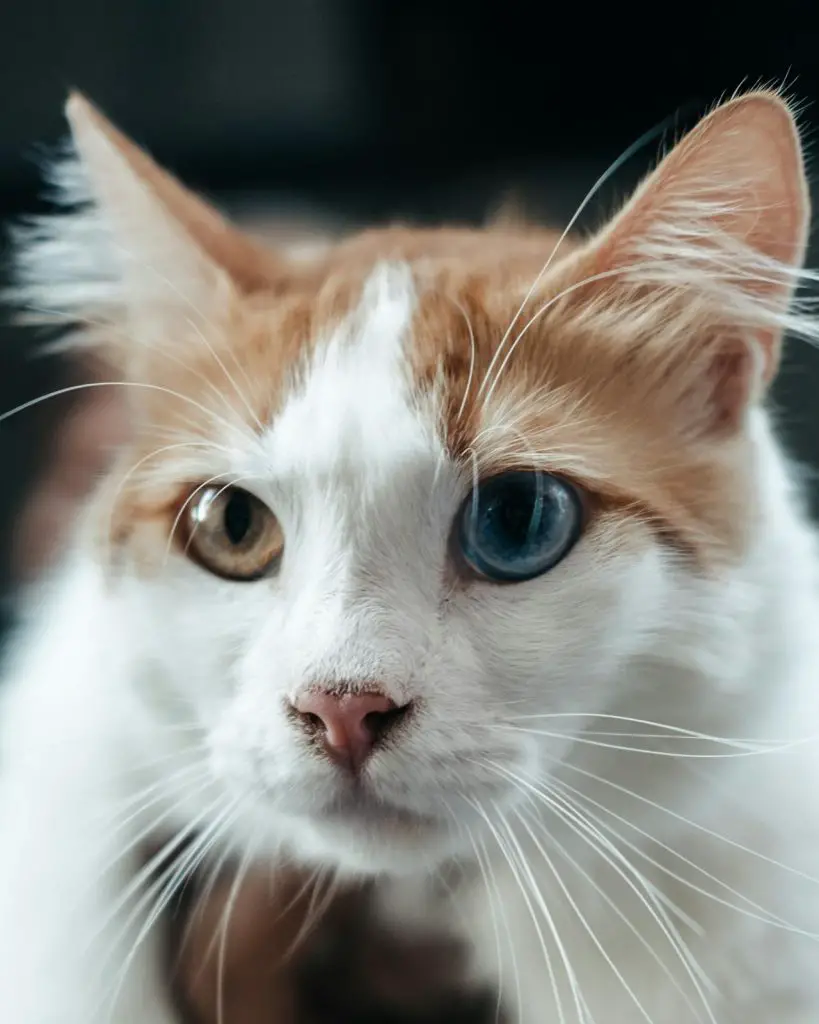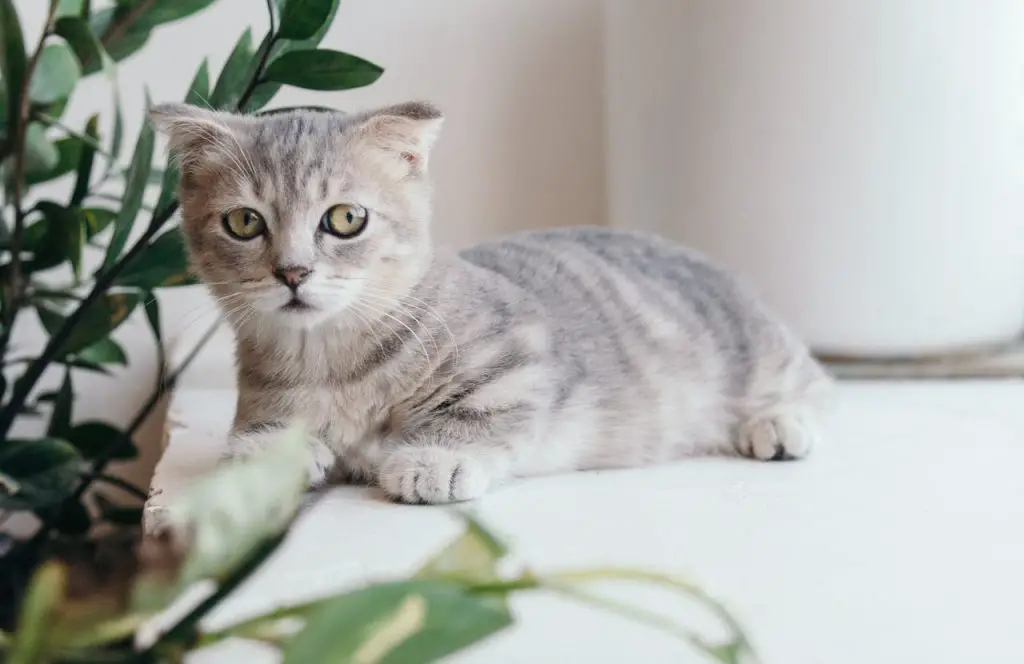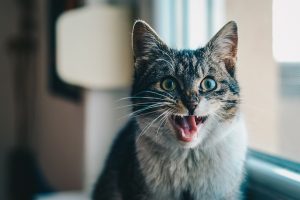
Your cat’s excessive meowing can stem from various causes. It might be hungry, thirsty, or seeking attention. Cats often vocalize to communicate their needs or desires. Health issues, such as pain or discomfort, can also trigger increased meowing. Stress, anxiety, or environmental changes may lead to more frequent vocalizations. During mating season, unaltered cats tend to be more vocal. As cats age, they might meow more due to cognitive changes or hearing loss. Environmental factors like noise or new pets can also contribute. Understanding these potential reasons can help you address your cat’s specific needs and reduce excessive meowing.
Table of Contents
Key Takeaways
- Cats meow excessively to communicate basic needs like hunger, thirst, or desire for attention.
- Learned behaviors reinforced by human responses can lead to persistent meowing for food or interaction.
- Health issues, including pain or discomfort, may cause increased vocalization in cats.
- Stress, anxiety, or environmental changes can trigger excessive meowing as a coping mechanism.
Hunger and Thirst
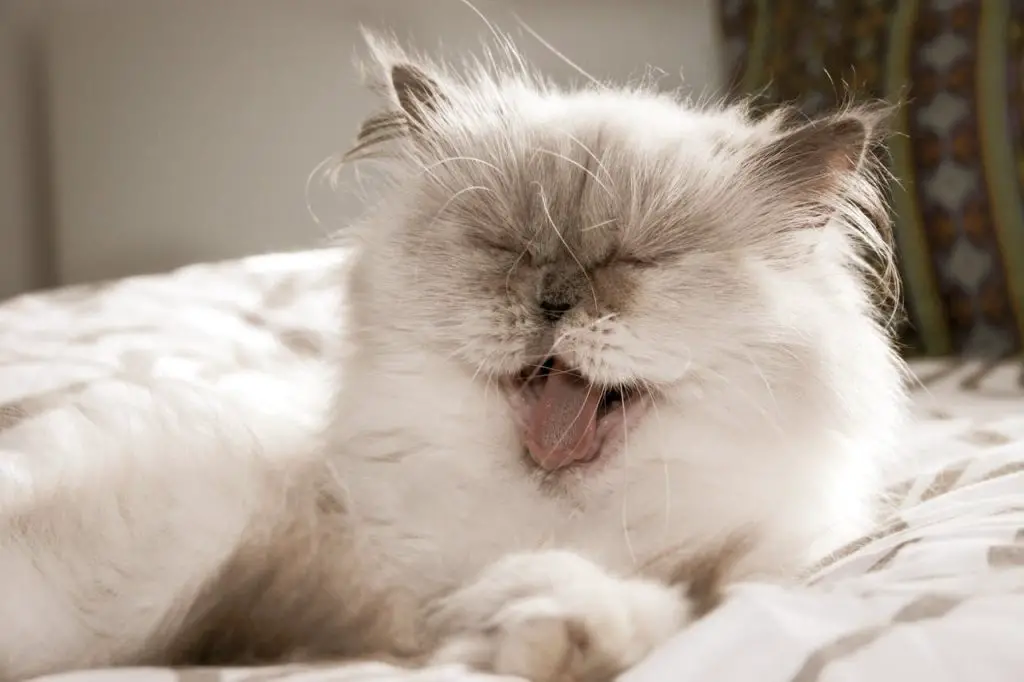
Hunger and thirst stand as primary motivators for a cat’s meowing behavior, often prompting persistent vocalizations until their needs are met.
Your feline companion’s meows serve as communication signals, directly linked to their innate hunting instincts. When hungry or thirsty, cats will vocalize to alert you, their caregiver, of their immediate requirements.
In the wild, cats wouldn’t meow to communicate with other adult cats; this behavior is primarily reserved for kittens seeking attention from their mothers.
However, domesticated cats have adapted this vocalization to interact with humans effectively. They’ve learned that meowing is an efficient way to convey their needs, particularly when it comes to food and water.
This post contains affiliate links. However all the information provided on this site are my own honest opinions. See more in Disclaimer.
You might notice your cat’s meows becoming more frequent or intense around their usual feeding times. This is a learned behavior, as they associate these times with the satisfaction of their hunger.
Similarly, if their water bowl is empty or not to their liking, they may meow to draw your attention to this issue.
Understanding these cues can help you respond promptly to your cat’s basic needs, ensuring their well-being and strengthening your bond.
Attention-Seeking Behavior
Your cat’s meowing may be a form of attention-seeking behavior stemming from boredom or loneliness.
Cats often learn that vocalizing leads to human interaction, reinforcing this vocal behavior over time.
Additionally, your feline companion might meow persistently to demand food or treats, especially if this tactic has been successful in the past.
Boredom and Loneliness
Cats often meow excessively when they’re bored or lonely, using vocalization as a tool to seek attention from their owners.
This behavior can be particularly prevalent in indoor cats with limited stimulation or those left alone for extended periods.
To address this issue, you’ll need to provide your feline companion with adequate mental and physical stimulation.
Consider implementing these playtime alternatives and companionship options to alleviate your cat’s boredom and loneliness:
- Interactive toys: Invest in puzzle feeders, laser pointers, or motorized toys to keep your cat engaged.
- Environmental enrichment: Create vertical spaces with cat trees, window perches, or shelves for exploration.
- Scheduled playtime: Dedicate specific times each day for interactive play sessions with your cat.
- Feline companionship: If feasible, consider adopting another cat to provide social interaction.
Reinforced Vocal Behavior
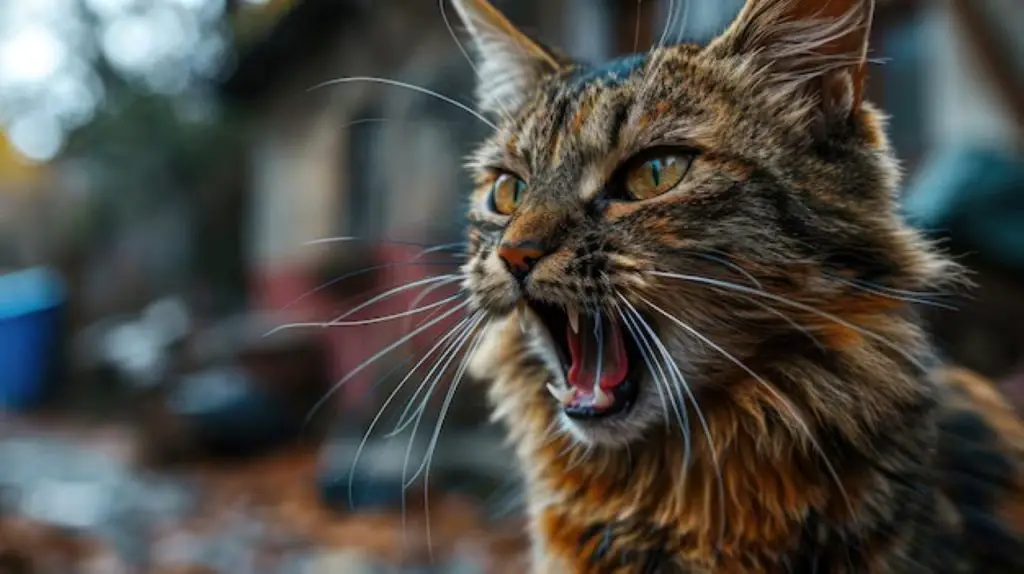
Reinforcing vocal behavior inadvertently can lead to persistent meowing as cats learn that their vocalizations effectively garner attention from their owners.
This phenomenon, known as reinforced vocal behavior, occurs when you consistently respond to your cat’s meows, whether positively or negatively.
Your reactions shape your cat’s communication methods, encouraging them to use meowing as their primary means of interaction.
Cats are astute observers and quickly learn which vocalization patterns yield the desired results. If you’ve routinely attended to your cat’s meows by offering food, play, or attention, you’ve unknowingly trained them to meow more frequently.
Even negative responses, such as scolding or shooing, can reinforce this behavior as your cat still achieves their goal of gaining your attention.
To address excessive meowing, it’s essential to identify the underlying cause and modify your response patterns.
Ignore non-urgent meows and reward quiet behavior to discourage attention-seeking vocalizations. Establish consistent feeding and play schedules to reduce anticipatory meowing.
Demanding Food or Treats
One of the most common reasons for attention-seeking meows is a cat’s demand for food or treats, often stemming from learned behaviors reinforced by their owners’ responses.
Cats quickly learn that vocalizing can lead to a desired outcome, particularly when it comes to satisfying their hunger or craving for treats.
This behavior is often exacerbated by inconsistent feeding schedules or overindulgence in treat-giving.
To address this issue, consider implementing the following strategies:
- Establish a consistent feeding schedule.
- Use automatic feeders to reduce association between you and food.
- Ignore excessive meowing for food outside designated times.
- Redirect attention with play or other activities.
Understanding your cat’s treat preferences can help you use treats more effectively as rewards for desired behaviors rather than as a response to incessant meowing.
It’s vital to maintain a balance between meeting your cat’s nutritional needs and avoiding overfeeding.
Consult with your veterinarian to determine appropriate portion sizes and feeding frequencies based on your cat’s age, weight, and health status.
Pain or Discomfort
When experiencing pain or discomfort, your feline companion may vocalize more frequently or intensely to alert you to their distress.
This increase in meowing can be an important indicator of underlying medical conditions that require attention.
Various health issues, such as arthritis, dental problems, urinary tract infections, or gastrointestinal disturbances, may prompt your cat to vocalize their discomfort.
It’s essential to pay close attention to changes in your cat’s meowing patterns, as these alterations can signal the onset or progression of health concerns.
In some cases, vocal cord abnormalities may also contribute to excessive or unusual meowing. These abnormalities can result from inflammation, growths, or neurological issues affecting the larynx.
If you notice a sudden increase in your cat’s vocalizations, especially if accompanied by other behavioral changes or physical symptoms, it’s vital to consult your veterinarian promptly.
They can perform a thorough examination to identify any underlying medical conditions and provide appropriate treatment.
Stress and Anxiety
Your cat’s meowing may be a sign of stress and anxiety, often triggered by changes in their environment.
Separation anxiety can lead to excessive vocalization when you’re away or preparing to leave.
Additionally, the presence of unfamiliar people or new pets in the household can cause your feline companion to meow more frequently as they express their unease.
Environmental Changes Trigger Stress
Cats can experience heightened stress and anxiety due to various environmental changes, leading to increased vocalization or meowing.
These habitat changes can disrupt your cat’s sense of security and routine, prompting them to vocalize their discomfort.
Environmental enrichment plays an essential role in mitigating stress-induced meowing. Common environmental changes that may trigger stress in cats include:
- Moving to a new home
- Rearranging furniture or redecorating
- Introduction of new pets or family members
- Construction or renovation work
To help your cat adapt to these changes, provide a stable and enriching environment. Maintain consistent feeding and playtime routines, and guarantee access to familiar scents and objects.
Create safe spaces where your cat can retreat when feeling overwhelmed. Gradually introduce changes, allowing your cat time to acclimate.
If excessive meowing persists despite efforts to minimize environmental stressors, consult your veterinarian. They can rule out underlying medical conditions and provide guidance on behavioral interventions.
In some cases, pheromone diffusers or anti-anxiety medications may be recommended to help your cat cope with environmental changes and reduce stress-induced vocalization.
Separation Anxiety Issues
Beyond environmental changes, separation anxiety can greatly contribute to a cat’s excessive meowing and stress-related behaviors.
Your feline companion may become distressed when left alone, leading to vocalization as a coping mechanism. This anxiety often stems from a cat’s strong emotional attachment to its owner and can manifest in various ways.

To better understand separation anxiety in cats, consider the following table:
| Signs of Separation Anxiety | Potential Solutions |
|---|---|
| Excessive meowing | Gradual desensitization |
| Destructive behavior | Environmental enrichment |
| Inappropriate elimination | Pheromone diffusers |
| Overgrooming | Professional behavioral therapy |
Recognizing these signs is essential for addressing your cat’s emotional needs. Separation anxiety can markedly impact your cat’s overall well-being and quality of life.
To mitigate this issue, focus on creating a secure environment and establishing consistent routines. Provide interactive toys and puzzle feeders to keep your cat mentally stimulated during your absence.
In severe cases, consult with a veterinarian or feline behaviorist for tailored strategies.
By understanding and addressing your cat’s separation anxiety, you can help reduce excessive meowing and promote a more balanced emotional state for your feline companion.
Unfamiliar People or Pets
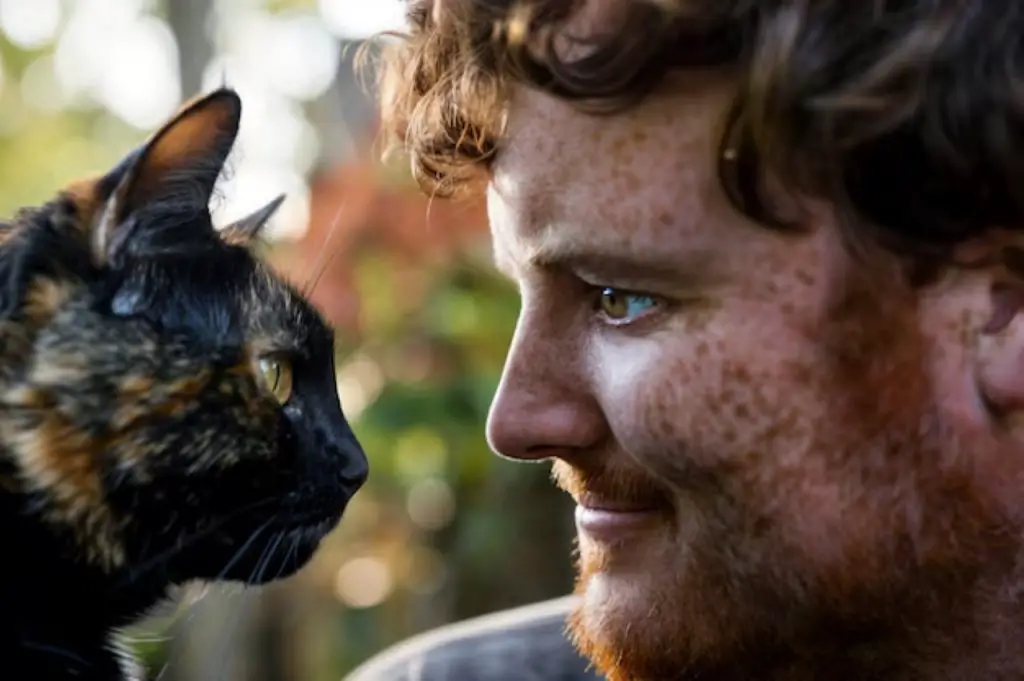
In the presence of unfamiliar people or pets, cats often exhibit stress-induced vocalizations, including excessive meowing.
This behavior stems from their innate territorial instincts and wariness of unfamiliar social interactions. Your cat’s increased vocalization in these situations serves as a communication tool to express discomfort or assert dominance.
To better understand your cat’s stress-related meowing, consider these key factors:
- Territorial behavior: Cats are inherently territorial and may feel threatened by newcomers in their space.
- Social anxiety: Felines can experience anxiety when faced with unfamiliar social situations or interactions.
- Sensory overload: New sights, sounds, and smells associated with visitors can overwhelm your cat’s senses.
- Protective instincts: Your cat may vocalize to alert you of potential ‘intruders’ in their territory.
To mitigate stress-induced meowing, create a safe space for your cat to retreat when visitors arrive.
Gradually introduce new people or pets to your cat in controlled, positive environments.
Use pheromone diffusers or calming aids to reduce anxiety.
If excessive meowing persists, consult your veterinarian to rule out underlying health issues and discuss potential behavioral interventions.
Mating Calls
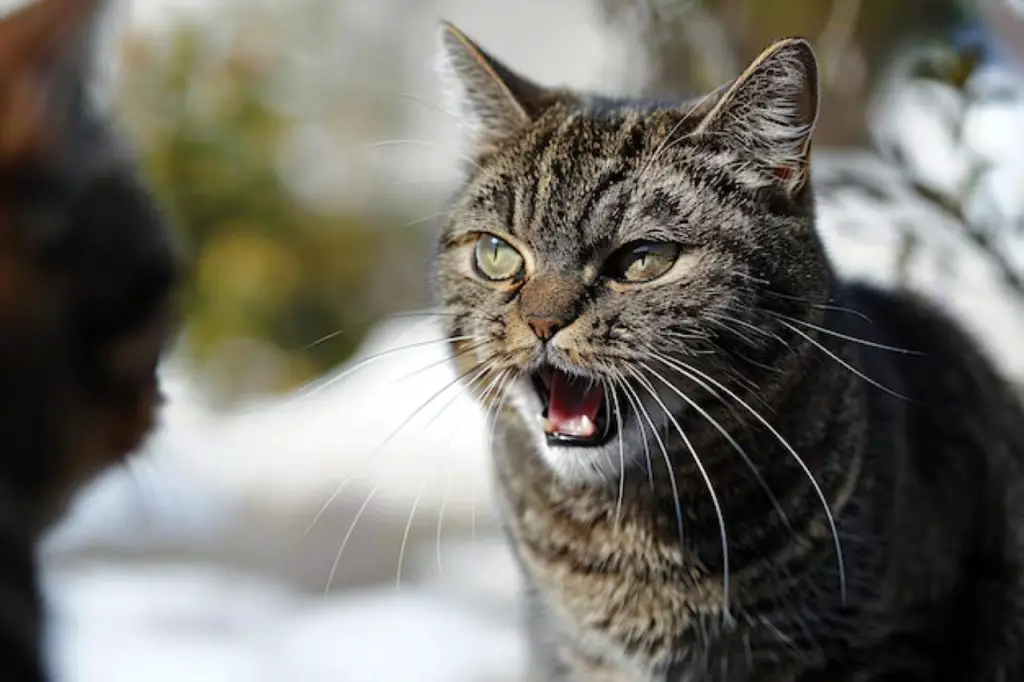
During mating season, you’ll hear a distinctive increase in the frequency and volume of feline vocalizations. These mating calls are an essential part of cats’ reproductive behavior and vocal communication.
Female cats in heat will produce loud, persistent yowls to attract potential mates. These vocalizations can last for several days and may occur every few weeks during breeding season.
Male cats respond to these calls with their own vocalizations, often engaging in competitive singing to win the female’s attention.
You’ll notice that these mating rituals involve a range of sounds, from low-pitched moans to high-pitched screeches.
The intensity and duration of these calls can be quite surprising, especially if you’re not accustomed to feline mating behavior.
It’s important to understand that these vocalizations are a natural part of your cat’s reproductive cycle. If you haven’t spayed or neutered your cat, these calls will continue regularly during breeding seasons.
Spaying or neutering your cat will greatly reduce or eliminate these mating-related vocalizations, providing a quieter environment and preventing unwanted litters.
If you’re concerned about excessive meowing during mating season, consult your veterinarian for advice on managing your cat’s reproductive health.
Age-Related Changes
As cats age, you’ll notice significant changes in their vocalizations, often reflecting their evolving physical and cognitive states.
Kitten vocalizations typically consist of high-pitched mews and chirps, primarily to communicate with their mother.
However, as cats mature and enter their senior years, their meowing patterns can shift dramatically.
Senior cat behaviors regarding vocalization may include:
- Increased frequency of meowing, especially at night
- Louder, more insistent calls, potentially due to hearing loss
- Disoriented vocalizations, possibly linked to cognitive decline
- Changes in pitch or tone, sometimes becoming raspier or hoarser
These age-related changes in meowing can be attributed to various factors. Older cats may experience sensory decline, leading to confusion and increased vocalization.
Cognitive dysfunction syndrome, common in senior cats, can cause disorientation and excessive meowing.
Additionally, chronic pain or discomfort from conditions like arthritis may prompt more frequent vocalizations.
It’s essential to monitor these changes in your aging cat’s meowing patterns and consult your veterinarian if you notice significant alterations.
They can help determine if the vocalizations are due to normal aging processes or indicative of underlying health issues requiring attention.
Environmental Factors
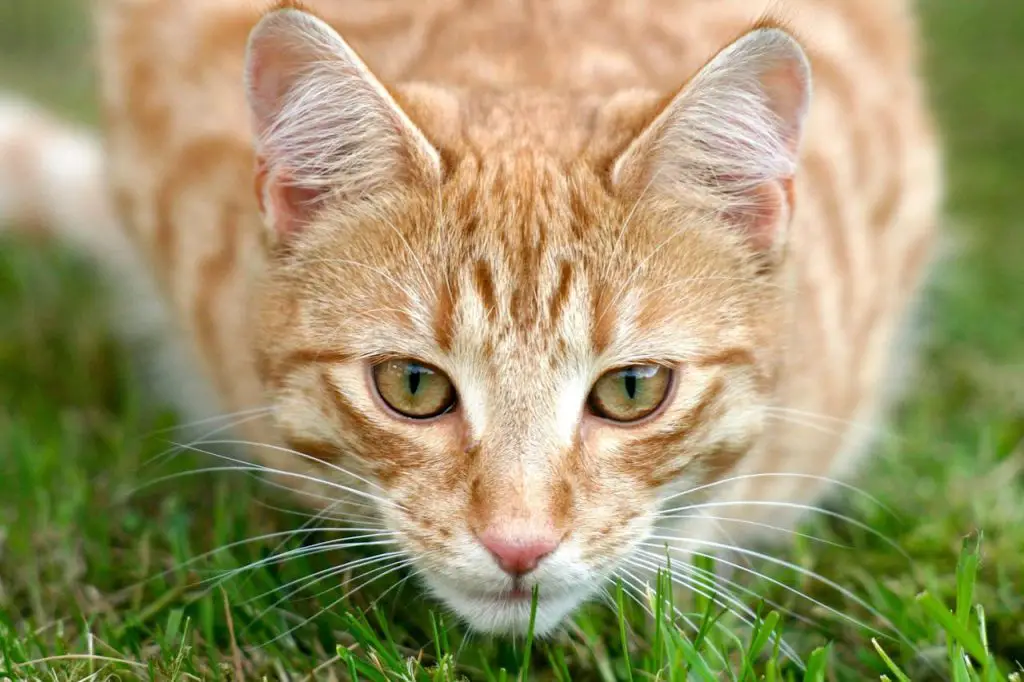
Environmental factors play an essential role in shaping your cat’s meowing behavior, influencing both the frequency and nature of their vocalizations.
Your cat’s surroundings can greatly impact their communication patterns, often leading to increased meowing in response to various stimuli.
Noise pollution is an important environmental factor that can affect your cat’s vocalization habits.
Constant exposure to loud sounds, such as traffic, construction, or household appliances, may cause your cat to meow more frequently as a stress response or an attempt to communicate over the ambient noise.
Additionally, sudden or unfamiliar sounds can startle your cat, prompting them to vocalize their distress or seek reassurance from you.
Habitat changes can also trigger alterations in your cat’s meowing behavior.
When you move to a new home or rearrange furniture, your cat may feel disoriented and increase their vocalizations to express anxiety or to locate familiar scents and territories.
Similarly, the introduction of new pets or family members can disrupt your cat’s established environment, potentially leading to more frequent meowing as they adjust to the changes and assert their presence in the modified social dynamics of the household.
Frequent Questions and Answers

Excessive meowing can indeed indicate breed-specific traits. You’ll find certain breeds, like Siamese, are known for their vocalization patterns. However, it’s vital to contemplate other factors before attributing excessive meowing solely to breed characteristics.
To differentiate between normal and excessive meowing, observe your cat’s frequency, duration, and context of vocalizations. Normal cat communication involves occasional meowing, while excessive meowing may occur constantly, without clear reasons, or at unusual times.
Indoor cats meow more, outdoor cats meow less. You’ll notice indoor behavior includes increased vocalization due to boredom, attention-seeking, or communication with humans. Outdoor instincts lead to less meowing as cats rely on other forms of communication in nature.
Yes, changes in diet can affect your cat’s meowing frequency. Dietary sensitivities may cause discomfort, leading to increased vocalization. Nutritional imbalances can also impact behavior. Monitor your cat’s diet closely and consult a veterinarian if meowing persists.
Picture a serene home, free from excessive feline vocalizations. You can indeed train your cat to meow less through behavioral modification. Identify meowing triggers, then implement consistent strategies like positive reinforcement and environmental enrichment to reduce unnecessary vocalization.
Final Thoughts
You’ve now explored the various reasons behind your cat’s excessive meowing.
From basic needs to complex emotional states, your feline friend’s vocalizations are a window into their world.
Remember, communication is a two-way street.
By addressing the underlying causes and responding appropriately, you’ll not only quiet the chorus but also strengthen your bond.
After all, in the symphony of cat ownership, isn’t harmony the ultimate goal?
